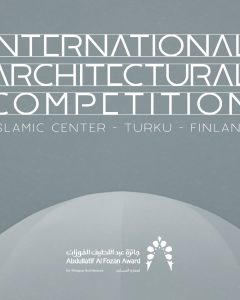First of all, I would like to express my gratitude and courtesy to Dr. Mashary Abdullah Al Naim for giving me the platform, to join this enlightened journal amongst the collective of esteemed experts, scholars and intellectuals. Besides, I would like to acknowledge Al Fozan Award for Mosque Architecture for sparing no efforts, pioneering the revitalization of Mosque architecture, and nurturing its exceptional stature from East to West. No question, the Award hails the historic worth and monumental value of mosques displaying their architectural unity, and pinpointing their diversity; fruited from the civilizational exchange between the Eastern traits of mosque construction and those of the West and Andalucía. The idleness of Mosque Architecture development had been grounded on the researchers’ negligence of the matter, due to the scarcity of surveillance documents, which elucidate the mosque architectural and decorative influences; by virtue of their Eastern descend exchange with that of Andalucía. This cultural exchange has enriched the Art of Islamic Architecture in terms of its planning, furnishing and decorative techniques, faming Muslim architects and constructors for their competent resourcefulness and endowment in the Moroccan Mosque Architecture Development.
The Moroccan Mosque Architecture style has been abiding by that of the Prophet’s Mosque PBUH in Medina. Yet, it has been distinguished for the vastness of its prayer halls with their perpendicular and parallel tiles to the Kiblah wall, and an open court. It has been also characterized by the abundance of its colonnades and pilasters. Moreover, it has been marked for its pyramidal ceilings and squared minarets. The Moroccan Mosque Architecture has revolutionized the use of pointed arches; horse hooves. Additionally, the walls have been decorated in sculptured plaster, focusing on the portico leading to the mihrab with a limited number of small domes covering the middle portico. Thusly, it could be said that the Moroccan Mosque Architecture style has been a simulated incarnation of the very first Mosque in Islam, enclosing the entire sum of poignant factors in Mosque Architecture.
Likewise, the Far West Mosque Architecture style has been defined by its trial allocation either in the façade or derriere of the mosque or even on its laterals perpendicular to the kiblah wall. Meanwhile the middle portico is signified by its supreme width and height amongst its counterparts; ruling out those cases, where the trial in their three aforementioned allocations are parallel rather than being perpendicular to the kiblah wall. The Aqsa Mosque; founded in 779 AD, 163 H in Jerusalem; has been the earliest realization of this plan. Accordingly, the Far West Mosque Architecture style has been inspired by both styles of the Prophet’s Mosque and Aqsa Mosque equidistantly.
Conjointly, the geographical location of the Far West and its experienced circumstances have reigned supreme on its building and construction techniques. The named region has been a favored destination for the migrating Arab families from Kairouan and its Eastern neighborhoods, right after its declaration as an Islamic Adarsa State. Henceforward, the novice melting pot has hosted an architectural style exchange, where the Eastern Mosque Architecture features has started to show on the Western ones.
On the contrary, some Western Mosque Architecture features have been adopted within the Eastern ones, by virtue of these flowing journeys between both terminals; as perfect channels for the cultural exchange to occur. Confessedly, Moroccans are accredited for inaugurating this exchange, for they have innovated their masterpiece; Hijazi journeys that has been inscribed by the voyagers of Morocco and Andalucía. Nowadays, they are reverend authenticated documentaries for their vivid description of the civilizational aspects of the Eastern Mosque Architecture style.
There have once been inspirited hearts and observing eyes devoted to catalog every single glimpse of civilizational and cultural speculation, whether pilgrims or travelers or even those settling authors, who have opted for staying and essaying the grandeur of the holy lands. This glory has been a persistent temptation for the nomad pilgrims, to visit these places, and admire its palaces, mosques, military castles, scientific foundations and edifices. Then, they go back to their homelands with their eye-witnessed civilization scriptures; most prominent; the description of Eastern Mosque Architecture by Ibn Jubair.





